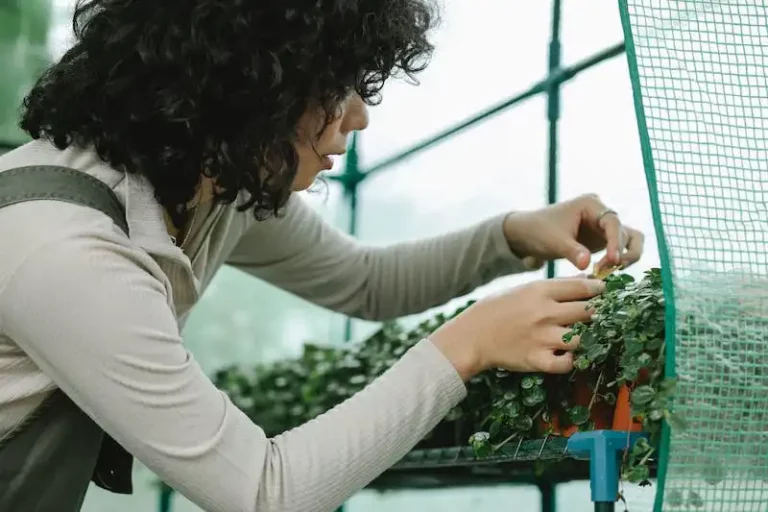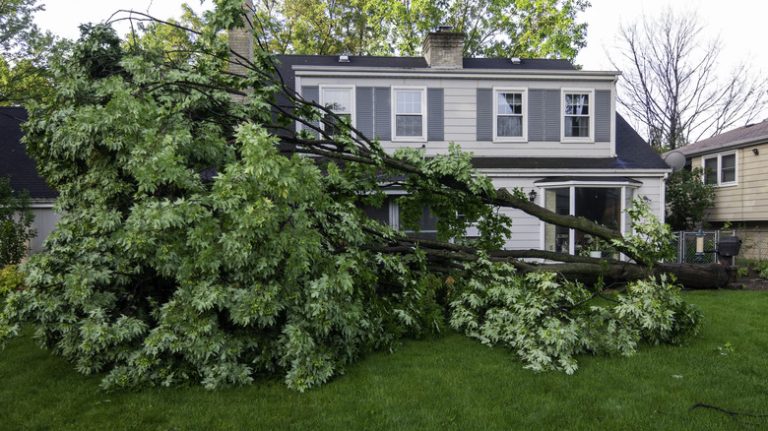Rhododendrons are commonly known for their beautiful flowers, but their leaves are equally fascinating. These broad-leaved evergreens have a distinct appearance that sets them apart from other plants in the garden.
The leaves of a rhododendron are typically large and shiny. They are oval or elliptical in shape, with a pointed tip and smooth edges. The upper surface of the leaf is dark green and glossy, while the underside is lighter in color and covered in tiny hairs. This fuzzy texture is an adaptation that helps protect the leaf from frosty temperatures and excessive moisture.
One of the key features of a rhododendron leaf is its dense arrangement of veins. These veins branch out from the midrib and create a network of intricate patterns that can be quite beautiful. The veins also serve an important function in transporting water and nutrients throughout the leaf.
In addition to their striking appearance, rhododendron leaves can also provide insight into the health and care of the plant. Changes in leaf color and texture can be a sign of a problem, such as nutrient deficiency, insect pests, or diseases. For example, yellowing leaves may indicate a lack of nitrogen or iron, while brown spots could be caused by fungal infections. By closely examining the leaves, gardeners can identify and address these issues before they seriously affect the health of the plant.
Overall, the leaves of a rhododendron are a testament to the plant’s resilience and adaptability. Whether you are a seasoned gardener or just starting out, taking the time to observe and appreciate the beauty of a rhododendron leaf can provide valuable insights and enhance your gardening experience.
Rhododendrons as Thermometers
Rhododendrons are beautiful flowering plants that can also serve as indicators of temperature changes. In Europe, lacebugs are a common issue that rhododendron owners have to deal with. These tiny insects feed on the sap of the leaves, causing them to turn yellow and brown.
However, lacebugs tend to be less active during cooler temperatures and become increasingly active during the hotter summer months. This means that if your rhododendron leaves are damaged by lacebugs, it is a sign that warmer weather is on the way.
In addition to lacebugs, rhododendrons are also susceptible to other pests and diseases. One such pest is the rhododendron stem borer, which can cause the stems of the plant to collapse. It is important to keep an eye out for any signs of wilting or drooping stems, as this could indicate an infestation.
Furthermore, rhododendrons are also prone to fungal infections, such as Armillaria root rot and blight. These infections can cause the leaves and flowers to become discolored and wilted. If you notice any unsightly discoloration or wilting, it is best to treat the plant with a suitable fungicide.
Another interesting fact about rhododendrons is that they are extremely responsive to changes in soil pH. If the soil becomes too acidic, the leaves will start to yellow and the plant will struggle to absorb essential nutrients like iron. On the other hand, if the soil becomes too alkaline, the leaves will develop dark green veins and the plant will have difficulty absorbing moisture.
Lastly, rhododendrons are also known for their ability to predict cold temperatures. In colder climates, rhododendron flower buds will remain closed on freezing days, protecting the delicate flower tissue inside. This is why you may see rhododendron flowers in full bloom after a warm spell followed by a sudden cold snap.
Overall, rhododendrons are not just beautiful flowers but also natural thermometers that can provide insight into the temperature changes and potential pests or diseases in your garden. By observing the appearance and behavior of your rhododendrons, you can gain a better understanding of the climate and microenvironment in your area.
Resources
When it comes to diagnosing and treating issues with rhododendron leaves, it’s important to have the right resources on hand. Here are some helpful tools and tips:
Thermometers: Use a thermometer to monitor the temperature, as rhododendrons are sensitive to extreme heat or cold. They prefer temperatures between 60°F and 70°F.
Katrina sprayer: This sprayer is an effective tool for applying insecticides or fungicides to control insect pests and diseases. It has a long reach to access the upper parts of the plant.
Myclobutanil: This is a common fungicide that can be used to control diseases like botryosphaeria, leaf spot, and petal blight. Follow the instructions on the label for proper application.
Watering: Make sure your rhododendrons are properly watered. They prefer a well-drained soil and regular watering, especially during hot, dry summers.
Scale Insecticides: If you notice scale insects on your rhododendron leaves, you can use insecticides specifically designed to control them. Follow the instructions on the label for the best results.
Azaleas: Azaleas are a type of rhododendron and often suffer from similar problems. Keep this in mind when diagnosing and treating issues with your plants.
Partial Sun: Rhododendrons prefer partial sun, meaning they should be planted in a location that receives some shade during the hottest part of the day. This can help prevent damage from too much exposure to sunlight.
Rhododendron Society: Consider joining a local or national rhododendron society to connect with other enthusiasts and gain access to valuable resources and advice.
Hortinno: Hortinno is an online resource that offers information and guidance on all aspects of growing rhododendrons. It can be a helpful tool for troubleshooting common problems.
Remember, properly diagnosing and treating issues with rhododendron leaves is important for maintaining the health of your plants and preserving their beauty.
What does a rhododendron leaf look like
Rhododendrons are popular flowering plants that are known for their beautiful blooms and evergreen foliage. The leaves of a rhododendron plant are usually dark green in color and have a leathery texture. They are elliptical or oblong in shape and have a slightly pointed tip. The size of the leaf can vary depending on the variety, but they typically range from 1 to 6 inches in length. The leaves are arranged in clusters at the ends of the branches and can be quite dense, giving the plant a full and compact appearance.
Healthy rhododendron leaves are glossy and vibrant, providing an attractive backdrop for the flowers. However, certain factors can affect the appearance and health of the leaves. One common issue is leaf curling, which can be caused by a variety of factors such as inadequate watering, high temperatures, or pests like lacebugs. If the leaves are drooping or wilting, it may be a sign of underwatering or overwatering. Rhododendrons prefer well-drained soil, so overwatering can lead to root rot and other fungal diseases. It’s important to water the plants regularly but avoid excessive moisture.
Another common problem that affects rhododendron leaves is leaf blight. This fungal disease causes brown spots or lesions on the leaves, eventually leading to their death. To control leaf blight, it’s important to remove and destroy infected leaves and provide proper air circulation by pruning the plants. Applying a fungicide can also help prevent the spread of the disease.
Rhododendrons are also susceptible to insect pests, such as weevils and lacebugs, which can cause damage to the leaves. These pests can be controlled with insecticides or by attracting beneficial insects that prey on them. Mulching around the base of the plants can also help protect the leaves from damage.
In addition to pests and diseases, environmental factors like cold temperatures and excessive winds can also affect the health of rhododendron leaves. Frost damage can cause the leaves to turn brown and collapse, while strong winds can cause them to dry out and become damaged. To protect the leaves from these conditions, it’s important to choose a sheltered location for the plants and provide adequate winter protection, such as covering them with burlap.
In conclusion, the leaves of a rhododendron plant are dark green, glossy, and have a leathery texture. They are elliptical or oblong in shape and are arranged in clusters at the ends of the branches. While healthy leaves provide an attractive backdrop for the flowers, they can be susceptible to a variety of issues such as leaf blight, pests, and environmental factors. With proper care and maintenance, however, rhododendron leaves can remain vibrant and beautiful throughout the growing season.
About Hortinno
Hortinno is a company dedicated to providing high-quality and diverse plant varieties to garden enthusiasts and professionals alike. With a focus on innovation and sustainability, Hortinno aims to bring nature’s beauty into everyday life. One of the plants that Hortinno specializes in is the rhododendron, a beautiful flowering shrub that is popular in gardens all over the world.
Rhododendrons are evergreen trees that can grow up to 40 feet tall. They produce stunning blooms in a variety of colors, including shades of pink, purple, red, and white. The leaves of the rhododendron are large and dark green, providing an attractive contrast to the vibrant flowers.
When it comes to caring for a rhododendron, proper planting and maintenance are crucial. Rhododendrons prefer moist, well-drained soil and can suffer from root rot if planted in areas with excessive water. It is also important to provide them with enough sunlight, although they thrive in partial shade as well.
In colder climates, rhododendrons can easily be damaged by freezing weather. To protect them, it is recommended to apply a layer of mulch around the base of the plant and wrap the branches tightly with burlap or a similar material. This will provide extra insulation and prevent frost damage.
Rhododendrons can also be susceptible to various diseases and pests. Common issues include leaf spot, blight, and insect infestations. Regularly inspecting the plant for any signs of disease or damage and applying appropriate controls, such as fungicides or insecticides, can help keep the rhododendron healthy.
When it comes to pruning a rhododendron, it is important to do so properly to minimize the risk of disease or injury. Dead or diseased branches should be promptly removed, and any vigorous growth should be trimmed back to maintain the plant’s shape. It is also possible to propagate rhododendrons by taking cuttings and replanting them.
In conclusion, rhododendrons are a beautiful addition to any garden, and with proper care and maintenance, they can thrive and bring years of enjoyment. Whether you are a gardening amateur or a seasoned pro, Hortinno is here to provide you with the best rhododendron plants and expert advice to help you succeed in your gardening endeavors.




